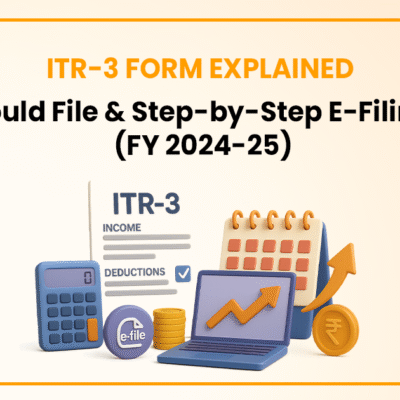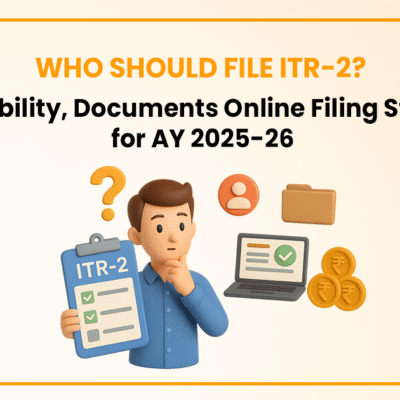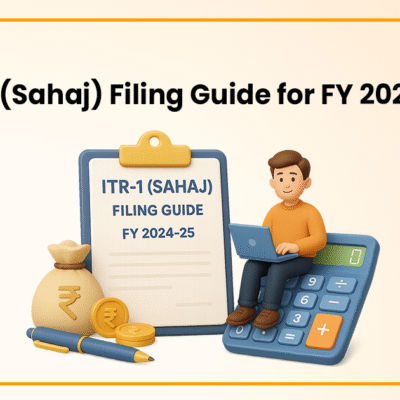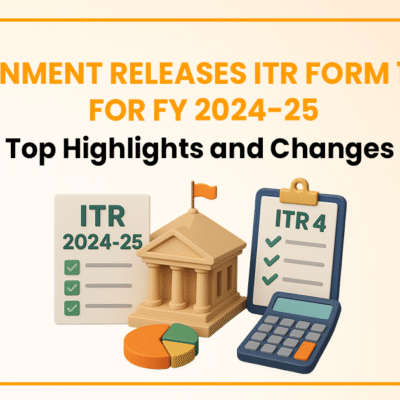
In a country like India, where financial security and long-term savings are of paramount importance, the Public Provident Fund Tax Benefits (PPF) has emerged as a popular and reliable investment option. PPF is a government-backed savings scheme that not only offers attractive interest rates but also provides tax benefits. In this article we will try to answer the question “What is the Public Provident Fund” in great detail. Also, this article will delve into the features and tax advantages of PPF, as well as guide you through the process of opening a PPF account.
What is the Public Provident Fund?
The Public Provident Fund (PPF) is a government-backed long-term savings scheme introduced in India in 1968 under the Public Provident Fund Act, 1968. The scheme was designed to encourage a habit of savings and to provide financial security to the general public during their retirement years. The PPF is managed by the Department of Economic Affairs, Ministry of Finance, and is available through designated nationalized banks, post offices, and some private banks.
Public Provident Fund Scheme
The Public Provident Fund (PPF) is a voluntary savings scheme introduced by the Government of India under the Public Provident Fund Act, 1968. The primary objective of Public Provident Fund Scheme is to encourage a habit of saving for individuals and provide them with a safe, tax-free, and long-term investment option. Public Provident Fund Scheme falls under the category of small savings schemes and is supervised by the Ministry of Finance.
Key Features of a PPF or Public Provident Fund
The key Features of a PPF or Public Provident Fund is as follows:
- Long-term Tenure: The PPF comes with a long-term tenure of 15 years. However, it can be extended indefinitely in blocks of 5 years after the initial maturity period. This makes it an excellent option for building a substantial corpus for retirement or other long-term financial goals.
- Government Backing: One of the main reasons for the popularity of PPF is the backing it receives from the Indian government. The scheme is administered by the Ministry of Finance and is backed by the full faith and credit of the Government of India. This provides investors with a high level of security for their investments.
- Tax Benefits: PPF offers attractive tax benefits to investors. The contributions made to the PPF account are eligible for tax deductions under Section 80C of the Income Tax Act, up to a maximum limit of Rs. 1.5 lakhs per financial year. Additionally, the interest earned and the maturity amount is tax-free, making it a tax-efficient investment option.
- Flexible Investment Amount: Investors can start their PPF account with a minimum deposit of Rs. 100, and the maximum annual contribution allowed is Rs. 1.5 lakhs. Investors have the flexibility to choose the amount they want to invest, either as a lump sum or in installments, with a minimum of 12 deposits per year.
- Compound Interest: PPF offers compounded interest, which means interest is calculated not just on the principal amount but also on the interest earned in previous years. This compounding effect significantly enhances the overall returns on the investment over the long term.
- Fixed Interest Rate: The interest rate on PPF is determined by the government and is usually higher than many other fixed-income investments. The rate is reviewed and declared quarterly, based on prevailing market conditions. Once an investor opens a PPF account, the interest rate remains fixed for the entire investment duration. This feature provides investors with stability and predictability regarding returns.
- Loan Facility: After the completion of the third financial year but before the end of the sixth financial year from the date of opening the PPF account, investors are eligible to avail of a loan against their PPF balance. This loan facility can be utilized for various financial needs, and the interest charged on the loan is generally lower than that of other forms of credit.
- Partial Withdrawals: Investors can partially withdraw from their PPF account after the completion of the sixth financial year. The amount that can be withdrawn is subject to certain conditions and limitations, providing some liquidity to account holders during emergencies.
- Transfer and Extension: In case an investor relocates to a different city or state, they can easily transfer their PPF account. Additionally, after the initial 15-year lock-in period, the account can be extended indefinitely in blocks of 5 years, giving investors the flexibility to continue with the investment or make further contributions.
- No Risk of Market Fluctuations: PPF is not linked to the stock market or any market fluctuations, making it a low-risk investment option. The guaranteed returns, coupled with government backing, ensure that investors' hard-earned money is safe and secure.
Tax Benefits of Public Provident Fund (PPF) as per Income Tax Act, 1961
The following are the Tax Benefits of Public Provident Fund (PPF) as per Income Tax Act, 1961:
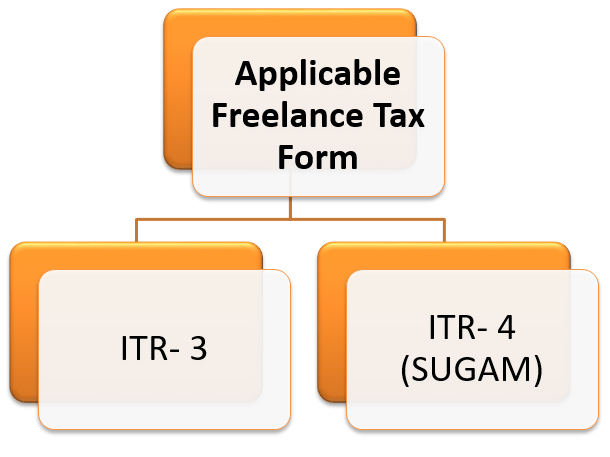
- Tax Exemption on PPF Contributions: One of the primary tax benefits of investing in a Public Provident Fund and tax benefits exemption on contributions. Any amount deposited into a PPF account is eligible for deduction under Section 80C of the Income Tax Act, 1961, up to the maximum limit specified by the government. As of the knowledge cutoff in September 2021, the maximum annual contribution limit was Rs. 1.5 lakhs per individual. This means that you can claim a deduction on the amount you deposit in your PPF account, reducing your taxable income by up to Rs. 1.5 lakhs.
Also read our Article on: Tax Exemptions Available for Startups in India
- Tax-Free Interest: Public Provident Fund and Tax Benefits offers a fixed interest rate, which is set by the government and is subject to change on a quarterly basis. However, the interest earned on the PPF account is entirely tax-free. Unlike many other investments where interest income is taxable, the interest earned on a PPF account is exempt from income tax under Section 10(11) of the Income Tax Act. This makes PPF an attractive option for individuals seeking tax-efficient returns on their savings.
- Tax-Free Maturity Amount: The maturity amount of a PPF account, which includes the principal amount and accumulated interest, is entirely tax-free. This exemption is provided under Section 10(11A) of the Income Tax Act, 1961. As a result, the proceeds received upon maturity are entirely in the hands of the investor, without any deductions for income tax. This feature makes PPF a compelling choice for building a tax-free corpus over the long term.
- No Wealth Tax on PPF: Wealth tax was abolished in India in the 2015-16 Budget. Prior to its abolition, individuals with substantial assets were liable to pay wealth tax. However, PPF was always exempt from wealth tax. With the removal of wealth tax, this benefit becomes more relevant for high-net-worth individuals seeking a tax-efficient investment avenue.
- Nomination Facility: PPF provides a nomination facility, allowing the account holder to nominate one or more individuals who will receive the accumulated balance in the event of the account holder's demise. The amount received by the nominee(s) is tax-free, ensuring that the tax benefits are extended even in unfortunate circumstances.
Public Provident Fund Interest Rate
The Indian government determines the public provident fund interest rate, which is subject to change every quarter. The public provident fund interest rate is 7.1% per annum, compounded annually, as of the most recent update in 2023.
Working of a Public Provident Fund (PPF) Account
An adult can open a PPF account for themselves or on behalf of a minor. The account tenure is 15 years, while the lock-in duration is 15 years. Deposits to a PPF account can range from Rs.500 to Rs.1.5 lakh per fiscal year.
The deposit can be paid in full or in installments. There is no limit to the number of installments per fiscal year. The deposits must be made every fiscal year during the term and are exempt from income tax under section 80C.
To keep the account operational, you must make a minimum deposit of Rs.500 per fiscal year. If you do not make this deposit, your account will be closed. To reactivate the account, you must pay a Rs.50 penalty as well as a minimum deposit of Rs.500.
The deposit earns 7.1% p.a. (Q4 FY2022-23) in interest, which is compounded annually. On the PPF balance, a lending facility is offered. In addition, according to specific criteria, you can make partial and premature withdrawals from your PPF account. When your tenure is up, you have the option of extending the account with or without making extra contributions. You can also choose to close the account.
Eligibility of Opening a Public Provident Fund (PPF) Account
The following is the eligibility of opening a Public Provident Fund (PPF):
- PPF can be invested in by any Indian citizen.
- Unless the second account is in the name of a minor, each citizen can only have one PPF account.
- PPF accounts cannot be opened by NRIs or HUFs. However, if they already have a PPF account in their name, it will stay active until its completion date. However, unlike Indian nationals, these accounts cannot be extended for a period of five years.
Documents required opening a Public Provident Fund (PPF) Account
You will need the following documents to open a PPF (Public Provident Fund) account:
- Application for the PPF Scheme
- Identity proof (such as an Aadhaar card, PAN Card, passport, or driver's licence)
- Address proof (such as an Aadhaar card, passport, etc.)
- Proof of Signature
You must deposit the first investment amount to open the PPF account after you have these documentation. It is vital to know that online PPF account opening is only available through bank Internet banking. Post offices do not provide Internet banking services, making it impossible to open a PPF account online.
How to open a PPF Account?
A PPF account can be opened at a Post Office or at any nationalized bank, such as the State Bank of India or the Punjab National Bank. These days, even private banks such as ICICI, HDFC, and Axis Bank, among others, are authorized to provide this service.
You must supply the following documents:
- Account opening application form duly completed
- KYC documents include Aadhaar, Voters ID, driving licence, and so on.
- Proof of Residential Address
- Form for Declaring a Nominee
- Photograph in Passport Size
Procedure of opening a Public Provident Fund (PPF) Account Online
The following is the procedure to be followed to open a Public Provident Fund (PPF) Account Online:
- Step 1: Access your bank account via online banking or mobile banking.
- Step 2: Click on the 'Open a PPF Account' button.
- Step 3: Select the 'Self Account' option if the account is for yourself. Select the 'Minor Account' option if you are opening the account on behalf of a minor.
- Step 4: Fill out the application form with the necessary information.
- Step 5: Enter the total amount you wish to put into the account for the fiscal year.
- Step 6: Send in your application. A one-time password (OTP) will be given to the registered mobile number. Enter it in the appropriate field.
- Step 7: Your PPF account will be setup immediately! The screen will show your PPF account number. An email will be sent to your registered email address verifying the transaction.
Procedure of opening a Public Provident Fund (PPF) through Post Office
The following is the procedure to open a Public Provident Fund (PPF) through Post Office:
- Step 1: Pick up an application form at your local post office or online.
- Step 2: Complete the form and send it together with the necessary KYC documents and a passport-size photograph.
- Step 3: Make the needed initial deposit to start a post office PPF account. The amount might range between Rs.500 and Rs.1.5 lakh every fiscal year.
- Step 4: Once your application has been processed, you will be handed a passbook for the PPF account you have opened.
Withdrawal of Public Provident Fund (PPF) Amount
Generally, the PPF account balance can be fully withdrawn only upon maturity, i.e. after 15 years. After 15 years, the whole amount standing to an account holder's credit in the PPF account, combined with the earned interest, can be withdrawn freely and the account closed.
However, if account holders require funds and choose to withdraw before 15 years, the system allows partial withdrawals beginning in year 7, i.e. after completing 6 years.
An account holder may withdraw up to 50% of the account balance at the end of the fourth year (preceding the year in which the amount is withdrawn or at the end of the preceding year, whichever is lower). Furthermore, withdrawals are only permitted once every fiscal year.
Meaning of a PPF Calculator
Handling calculations may not be easy for every one of us. If you are going to invest in PPF but are unsure how much to invest or how much return you would receive on a specific amount, our PPF Calculator is here to help.
Once you've determined how much you can afford to invest on a regular basis, the calculator uses a 15-year tenure and the current interest rate to calculate your returns.
How may the PPF Calculator assist you?
When planning your investments, using a PPF Calculator to predict the returns can be extremely beneficial because:
- The PPF Calculator answers all of your queries about how the account operates.
- You can see how much return you can expect on a specific amount of investment.
- You can use the PPF Calculator again and again until you find the right balance of how much you need to invest to receive the desired returns.
- Because this is automated, manual calculations may be avoided and errors avoided.
- You can use the PPF Calculator throughout the tax planning step to properly plan your investments.
- Because the PPF account can be extended beyond the lock-in period, you can get a sense of how much time you have till retirement and how much wealth you can accumulate until then.
To Sum Up
The Public Provident Fund and tax benefits has proven to be a reliable and efficient investment option for Indian citizens over the years. With its attractive interest rates, tax benefits, and safety, it stands out as an excellent avenue for building a substantial retirement corpus. However, potential investors should keep in mind that the PPF is a long-term commitment, and premature withdrawals can affect the overall benefits of the scheme.
As with any financial decision, it is advisable to consult with a financial advisor, you may also connect with our Experts at Legal Window to assess individual goals and determine if the PPF aligns with their overall investment strategy. Nonetheless, for individuals seeking a secure and tax-efficient investment avenue, the PPF remains a popular choice to secure their financial future.
Neelansh Gupta is a dedicated Lawyer and professional having flair for reading & writing to keep himself updated with the latest economical developments. In a short span of 2 years as a professional he has worked on projects related to Drafting, IPR & Corporate laws which have given him diversity in work and a chance to blend his subject knowledge with its real time implementation, thus enhancing his skills.
Categories
- Agreement Drafting (23)
- Annual Compliance (13)
- Change in Business (37)
- Company Law (150)
- Compliance (90)
- Digital Banking (3)
- Drug License (4)
- FEMA (17)
- Finance Company (42)
- Foreign Taxation (9)
- FSSAI License/Registration (15)
- GST (124)
- Hallmark Registration (1)
- Income Tax (214)
- Latest News (36)
- Miscellaneous (170)
- NBFC Registration (8)
- NGO (18)
- SEBI Registration (6)
- Section 8 Company (10)
- Start and manage a business (27)
- Startup/ Registration (134)
- Trademark Registration/IPR (48)
Recent Posts
- Major Upgrade: Breaking Down GST 2.0 September 15, 2025
- New Income Tax Bill 2025 August 27, 2025
- ITR-3 Form Explained: Who Should File & Step-by-Step E-Filing Guide (FY 2024-25) June 25, 2025
All Website Tags
About us
LegalWindow.in is a professional technology driven platform of multidisciplined experts like CA/CS/Lawyers spanning with an aim to provide concrete solution to individuals, start-ups and other business organisation by maximising their growth at an affordable cost.




